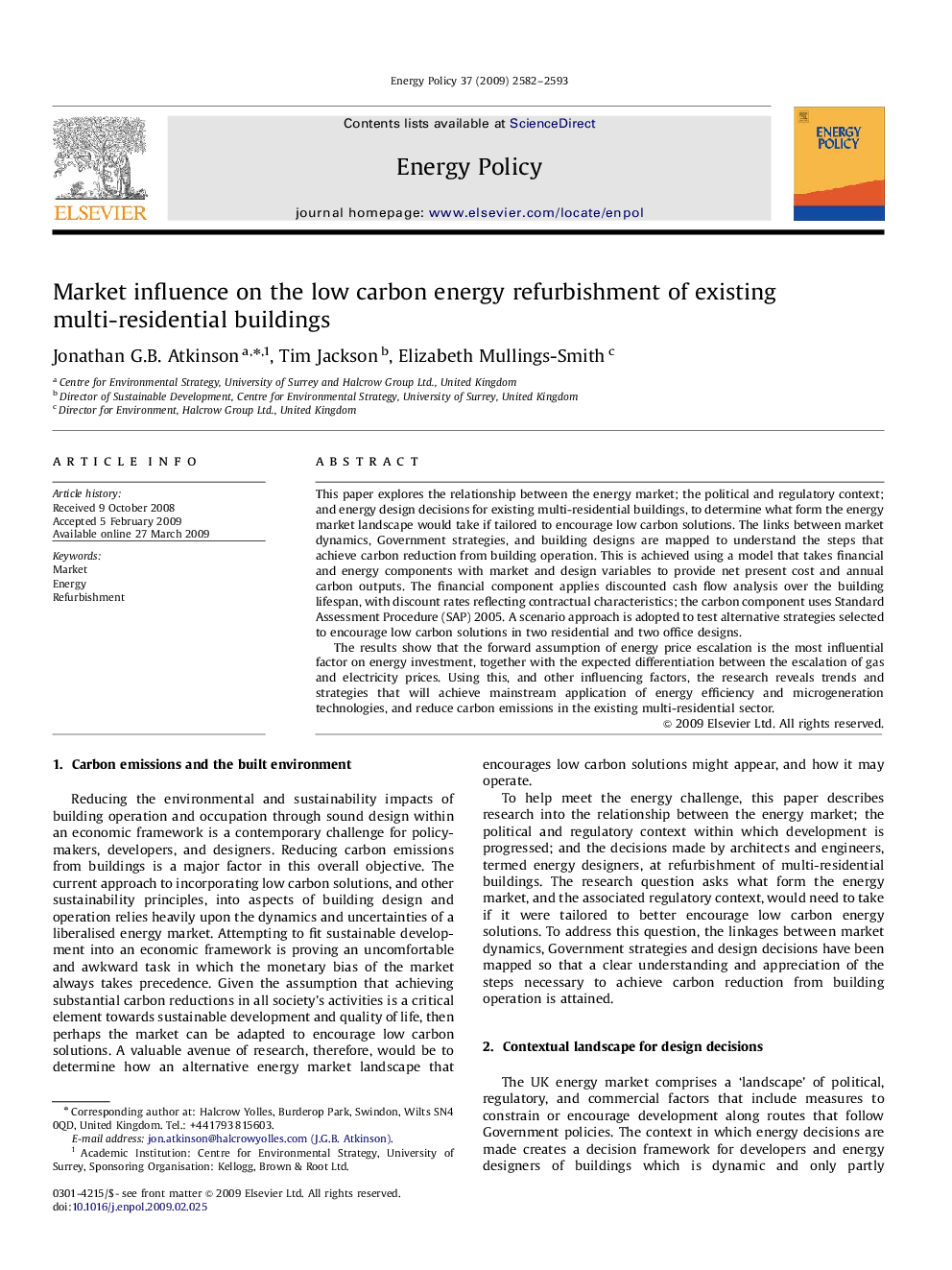| Article ID | Journal | Published Year | Pages | File Type |
|---|---|---|---|---|
| 995257 | Energy Policy | 2009 | 12 Pages |
This paper explores the relationship between the energy market; the political and regulatory context; and energy design decisions for existing multi-residential buildings, to determine what form the energy market landscape would take if tailored to encourage low carbon solutions. The links between market dynamics, Government strategies, and building designs are mapped to understand the steps that achieve carbon reduction from building operation. This is achieved using a model that takes financial and energy components with market and design variables to provide net present cost and annual carbon outputs. The financial component applies discounted cash flow analysis over the building lifespan, with discount rates reflecting contractual characteristics; the carbon component uses Standard Assessment Procedure (SAP) 2005. A scenario approach is adopted to test alternative strategies selected to encourage low carbon solutions in two residential and two office designs.The results show that the forward assumption of energy price escalation is the most influential factor on energy investment, together with the expected differentiation between the escalation of gas and electricity prices. Using this, and other influencing factors, the research reveals trends and strategies that will achieve mainstream application of energy efficiency and microgeneration technologies, and reduce carbon emissions in the existing multi-residential sector.
